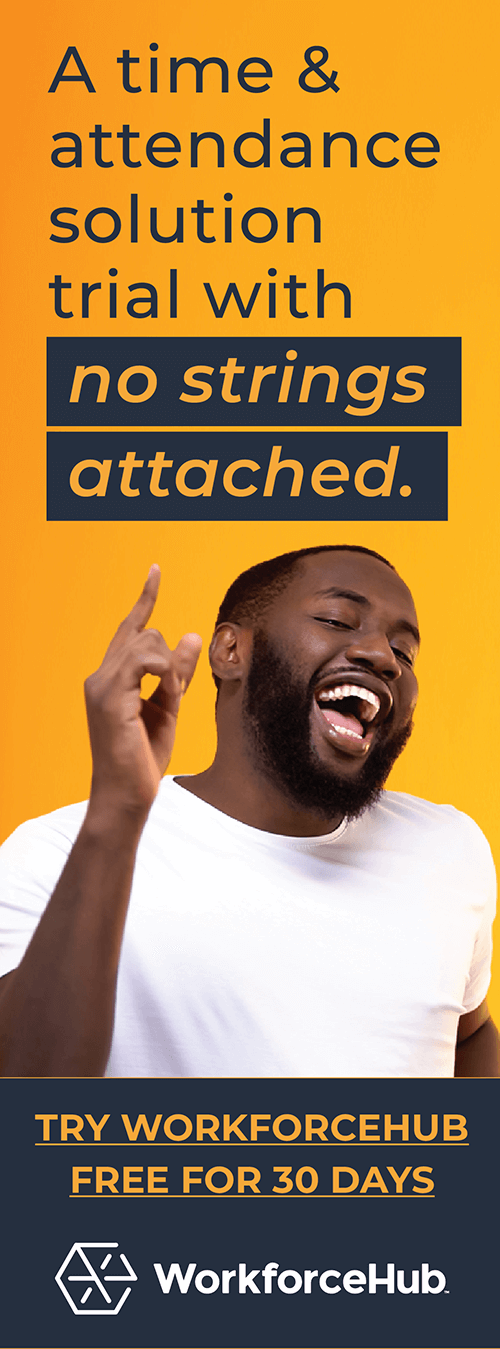Human Resources Management: What Is an HRMS?

Choosing enterprise Human Resources software can be overwhelming. There seems to be more options than ever before. And choice overload doesn’t help.
In today’s post, we look at a platform that does it all: HRMS (Human Resources Management System), sometimes called HRIS (Human Resources Information System).
What is an HRMS?
HRMS is an umbrella term for an integrated HR software suite. Each tool allows you to manage one or many HR processes in the employee life cycle. Whether the task is done daily or once a year, the HRMS performs and documents the actions.
The various tools interact with your employee database. They also work together, sharing information and coordinating processes. (Hence the term ‘system.’) This eliminates most of the manual data entry required with spreadsheets.
How Does an HRMS Work?
An HRMS automates things HR used to do by hand. Electronic documents replace paper forms and file cabinets. Templates streamline repetitive workflows. Employees complete forms online and verify with e-signature.
Today’s HRMS have mobile access and employee self-service (ESS).
What Does an HRMS Do?
Here are broad categories of HRMS functions with the related sub-processes and features.
Recruiting/Hiring
- Managing job descriptions
- Receiving/tracking applications
- Posting positions to job boards
- Screening questionnaires
- Resume parsing
- Interview scripts
- Standardized candidate scoring
- Auto-communication: emails/texts
- Talent pipeline engagement
Onboarding
- New hire paperwork
- E-signature
- Tax forms
- Benefits enrollment
- Employee handbooks
Time and Attendance
- Punch in/out
- Time cards
- PTO management
- Import hours to payroll
- Mobile punch in/out
- Geofencing
- Absence management
Employee Scheduling
- Multi-team scheduling
- Graphical interfaces
- Shift trades
- Schedule adherence
- Overtime alerts
- Labor force planning
Employee Engagement
- SMS alerts
- Company directory
- Quick surveys
- Rewards
- Anonymous suggestion box
- Wellness programs
Employee Self-Management
- Virtual shift trade board
- Timesheets
- Work schedules
- Paystubs
- Tax forms
- Policies and procedures
Provable Compliance
- Audit history
- Reports
- Certifications
- Hiring practices
Manager Tools
- Time off requests
- Schedule templates
- Schedule rules/alerts
- Geofencing/mobile clock in/out
- Timesheet approvals
- Overtime management
Training and Development
- Performance reviews
- Product/services training
- Succession planning
- Talent pipeline engagement
What can an HRMS do for my company?
We’ve outlined the nuts and bolts. Now let’s discuss high-level benefits.
Visibility
24/7 visibility of business operations. Analytics detect trends early. This lets you make proactive instead of reactive decisions.
Labor Cost Management
Optimizing human capital ensures you get the most value from your labor dollar. Employee schedule forecasting. Overtime alerts to avoid costly time-and-a-half. Schedule lockout prevents time card padding. Real time productivity monitoring.
Increased Accuracy
A webclock captures employee punches. A computer calculates hours. This prevents payroll mistakes due to human error.
Convenience
Mobile HR management for employees, supervisors, and admin staff. Templates streamline processes. Search tools access information with a mouse click.
Workplace Culture
Your workplace culture is inextricably linked to HR management. When an applicant applies, they are exposed to your culture. Each interaction reinforces it. An HRMS reinforces your commitment to efficiency and innovation. It allows your employees to find answers to HR questions so they can concentrate on their job duties.
Collaboration
An HRMS centralizes information. Everyone in the organization can interact with the necessary people data. Real time updates reduce confusion.
What Kind of Companies use an HRMS?
Small businesses, mid-size businesses, and enterprise level organizations use HRMS. They can be found in every industry around the world. Companies that are 100% virtual can manage remote employees in every time zone.
How Much Does an HRMS Cost?
There is such a wide variety of configurations, it’s impossible to pin this number down. Systems designed for small businesses can cost less than ten dollars per employee per month. Swipeclock’s WorkforceHub, for example, is only $6 per employee per month. It includes all modules for core and strategic HR functions.
Systems designed for enterprise businesses can cost hundreds of dollars per month.
It’s important to know, however, that cloud computing has sharply reduced the prices. You don’t have to house the software on company servers. Your HRMS vendor keeps the software secure and up-to-date.
It’s important to not that you can use cloud-based HRMS with capabilities that used to cost thousands of dollars.
WorkforceHub
WorkforceHub is one of the most affordable HRMS on the market. The tools integrate seamlessly and the interface is so intuitive it requires very little training.
- Timekeeping
- Scheduling
- Applicant Tracking
- Employee Engagement
WorkforceHub is a one-stop HR resource that revolutionizes the way you run your business.
Simplify HR management today.
Simplify HR management today.
Navigating the Complexities of Healthcare Recruitment
The healthcare sector is renowned for its rewarding nature, offering professionals the chance to significantly impact individuals’ lives by aiding in their recovery from various ailments and conditions. However, for those tasked with recruitment within this sector, the challenges are plentiful. Delve into our in-depth guide for an array of strategies to elevate your healthcare…
Read MoreHow Improving Candidate Engagement Influences the Hiring Process
Applicants invest considerable time, effort, and thought into their job applications. Regrettably, it’s all too common for employers to delay responses, with some failing to provide any follow-up whatsoever. Such practices can have a negative effect on the candidate experience, influencing your organization’s hiring efficiency and reputation. Ensuring a positive experience for candidates is crucial…
Read More





